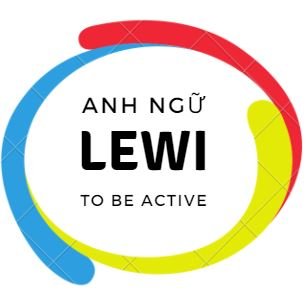PASSIVE VOICE (CÂU BỊ ĐỘNG)
Dạng chung của câu bị động
S + be + past participle + (by + doer)
Khi nào cần xài dạng bị động?
Một là không biết tác nhân của hành động
Example: The house was broken into last night and the police is investigating some people.
Hai là khi chỉ cần tập trung mô tả hành động là được.
Example 1: The novel was carefully edited before being published.
Example 2: Smoking is strictly banned here.
Câu bị động rất hữu ích khi chủ ngữ chung chung, có nêu ra cũng không có tác dụng gì. Example: A lot of people believe that life in large cities is more expensive than in rural areas. àLife in large cities is believed to be more expensive than in rural areas (by a lot of people)
Công thức của bị động biến đổi từ câu chủ động như sau
Active voice: S + Verb + Object
Passive voice: S + be + Past participle + (by + Noun)
Example: They will finish this budget report tomorrow.
à This budget report will be finished (by them) tomorrow.
Thực hiện đổi bị động như sau:
- Bước 1: Xét động từ của câu chủ động có phải là ngoại động từ (transitive verb) hay không? Nếu là transitive verb thì mới đổi được, còn không thì không thể.
- Bước 2: Xét tân ngữ của câu chủ động là gì, để biến nó thành chủ ngữ của câu bị động.
- Bước 3: Xét thì của động từ chính trong câu chủ động để biết mà chia động từ “be” trong câu bị động tương ứng với thì đó và tương ứng với chủ ngữ của câu bị động này.
- Bước 4: Lấy động từ trong câu chủ động đưa vào bị động và phải ở dạng past participle.
- Bước 5: Xét xem có cần “by + tác nhân” hay không. Nếu cần thiết phải nêu rõ tác nhân thì viết vào, nếu không thì khỏi viết.
Example: The bus is coming in 5 minutes. (intransitive verb)
Cuối cùng, nhớ thứ tự của trạng ngữ chỉ nơi chốn và trạng ngữ chỉ thời gian (adverbial of place and adverbial of time) theo thứ tự sau:
Adverbial of place, by + agent, adverbial of time
Example: I remember being taken to the zoo by my father last year.
- CÂU BỊ ĐỘNG CÓ ĐỘNG TỪ CHIA THÌ Nguyên tắc chung:
Cần thuộc dạng chủ động của động từ để từ đó viết động từ “be” phù hợp.
| Thì (tense) | Chủ động (active voice) | Bị động (passive voice) |
| Simple present | S + V | S + am/is/are + p.p./V3 |
| Present continuous | S + am/is/are + V-ing | S + am/is/are + being + p.p./V3 |
| Present perfect | S + have/has + p.p. / V3 | S + have/has been + + p.p./V3 |
| Present perfect continuous | S + have/has been + V-ing | S + have/has been being + p.p./V3 |
| Simple past | S + V-ed / V2 | S + was/were + p.p./V3 |
| Past continuous | S + was/were + V-ing | S + was/were being + p.p./V3 |
| Past perfect | S + had + p.p. / V3 | S + had been + p.p./V3 |
| Past perfect continuous | S + had been + V-ing | S + had been being + p.p./V3 |
| Simple future | S + will + B.I. | S + will be + p.p./V3 |
| Future continuous | S + will be + V-ing | S + will be being + p.p./V3 |
| Future perfect | S + will have + p.p. / V3 | S + will have been + p.p./V3 |
| Future perfect continuous | S + will have been + V-ing | S + will have been being + p.p./V3 |
| Near future | S + be going to + B.I. | S + be going to be + p.p./V3 |
- CÂU CÓ CÔNG THỨC VERB + OBJECT + TO + B.I.
Active: S + Verb + Object + to-B.I.
Passive: à S + be + p.p. + to-B.I.
Example 1: They don’t allow smoking in this area. àSmoking is not allowed in this area.
Example 2: Strong winds forced us to cancel our garden dinner party. àWe were forced to cancel our garden dinner party by strong winds.
*** Chú ý về cách dùng động từ make/let: make/let + object + B.I.
Passive:
Example 1: My mother makes me clean the floor every day. àI am made to clean the floor every day by my mother. àMy mother makes the floor be cleaned every day (by me).
Example 2: We will let him go.
àHe will be let go. = He will be allowed to go.
3. ĐỘNG TỪ CÓ DIRECT VÀ INDIRECT OBJECT
Kiểu động từ này có thể có 2 tân ngữ direct và indirect object. Có thể sử dụng một trong hai tân ngữ nào cũng được nhưng tân ngữ chỉ người được lựa chọn nhiều hơn. Example 1: We gave him a very nice music box on his wedding day. à He was given a very nice music box on his wedding day. (cách 1) àA very nice music box was given to him on his wedding day. (cách 2) đối với cách chuyển 2 cần thêm giới từ “to” để nối với động từ ‘given’. Các động từ đi với ‘to’ là give, bring, offer, send, show, write, post, pass.
Ngoài ra, có một số động từ đi với ‘for’, đó là buy, make, cook, keep, find, get, save, order.
Example 2: She didn’t show the customs her passport. àHer passport wasn’t shown to the customs.
Example 2: The Italian restaurant is offering customers a good promotion program this month.
àA good promotion program is being offered to customers by the Italian restaurant this month.
Example 4: My wife is making a cup of tea for me.
àA cup of tea was being made for me by my wife.
4. ĐỔI CÂU CÓ MODAL VERB 4.1 SIMPLE MODAL VERB
Active: S + modal verb + B.I.
àPassive: S + modal verb + be + p.p./V3 Example 1: Visitors to the temple should strictly follow the dressing code. àThe dressing code should be strictly followed by visitors to the temple.
Example 2: People can obtain further information about the event by going to our official website.
à Further information about the event could be obtained by going to our official website.
4.2 MODAL PERFECT
Active: S + modal verb + have + past participle + object
à Passive: S + modal verb + have been + past participle + object
Example: We could have completed the task before the deadline if there had not been the summer break.
àThe task could have been completed before the deadline if there had not been the summer break.
5. CÂU CÓ ĐỘNG TỪ TƯỜNG THUẬT (VERB OF REPORTING)
Các động từ tường thuật thường gặp: say, think, know, believe, argue, accept, promise..v.v…để thuật lại các câu nói, ý nghĩ, câu hỏi…
- Dạng 1:
Active: S + V + Object + that + clause
Passive: à Subject (lấy từ object của active) + be + p.p. + that + clause Example: Your parents told you that you should stay at home tomorrow. àYou were told by your parents that you should stay at home tomorrow.
Example 2: Your parents told us that you have just been promoted.
àWe were told by your parents that you have just been promoted.
- Dạng 2:
Active: S + V + that + clause Ở đây có 2 phương án để đổi sang passive voice.
** Phương án 1: xài chủ ngữ trang trọng (formal subject ‘it’)
Passive: àIt is + p.p. + that + clause Example: People think that Coca Cola is more flavourful than Pepsi. àIt is thought that Coca Cola is more flavourful than Pepsi.
** Phương án 2: lấy chủ ngữ của mệnh đề that + clause biến thành chủ ngữ của câu, và phối hợp với to+B.I.
Example: People think that Usain Bolt is the fastest man in the world. àUsain Bolt is thought to be the fastest man in the world.
Vì trong cách đổi này có to +B.I., có 3 trường hợp của B.I. sẽ phát sinh
– Trường hợp 1: to + B.I. khi động từ trong mệnh đề ‘that+ clause’ cùng thì hoặc diễn ra sau động từ của mệnh đề tường thuật
Example: People believe that Chinese has the largest number of speakers.
à Chinese is believed to have the largest number of speakers.
– Trường hợp 2: to be + V-ing khi động từ trong mệnh đề “that + clause” ở tiếp diễn
Example: They think that the Vietnamese government is developing a new metro railway system.
àThe Vietnamese government is thought to be developing a new metro railway system. – Trường hợp 3: to have + p.p. khi động từ trong mệnh đề “that + clause” xảy ra trước động từ của mệnh đề tường thuật.
Example: People said that the burglars had left the building before the security guards found out. àThe burglars were said to have left the building before the security guards found out.
6. CÂU CÓ ĐỘNG TỪ TƯ DUY (VERB OF THINKING)
Active: S + suggest/consider + gerund + object
Example: He suggested throwing the garbage away the before they went to bed.
àHe suggested the garbage being thrown away before they went to bed.
àHe suggested that the garbage should be thrown away before they went to bed.
àit was suggested that the garbage should be thrown away before they went to bed.
Active: S + advise/agree/arrange/decide + to-B.I.
Example: The council agreed to enact the new policy the following month.
àThe council agreed that the new policy should be enacted the following month.
àIt was agreed that the new policy should be enacted the following month.
7. CÂU CÓ ĐỘNG TỪ TRI GIÁC (VERB OF PERCEPTION)
Các loại động từ tri giác thường được sử dụng: see, watch, hear, notice có công thức active là
7.1 Khi quan sát hoặc nghe sự việc đang diễn ra: S + see/watch/hear/notice + someone + V-ing à Someone + be seen/watched/heard + V-ing Example 1: I saw him chasing his dog in the street.
à He was seen chasing his dog in the street. Example 2: They saw the children entering the church.
àThe children were seen entering the church.
7.2 Khi quan sát hoặc nghe sự việc từ đầu tới cuối: S + see/watch/hear/notice + someone + B.I. à Someone + be seen/watched/heard + to + B.I.
Example 1: Tan Son Nhat is a very busy airport. You can watch aircraft take off or land every 5 minutes. à Tan Son Nhat is a very busy airport. Aircraft can be watched to take off or land every 5 minutes.
Example 2: They saw the children enter the church. à The children were seen to enter the church.
8. CÂU CẦU KHIẾN (CAUSATIVE FORM)
8.1 Dạng active: have/has/had + object (humans) + B.I.
Passive: à S+ have/has/had + object (things) + p.p. (by someone)
Example: I have the mechanics repair my car yesterday because it had broken down.
à I had my car repaired yesterday by the mechanics because it had broken down.
8.2 Dạng active: get/got + object (humans) + to + B.I.
Passive: àS + get/got + object (things) + p.p. (by someone) Example: I got my secretary to type the final budget report.
àI got the final budget report typed by my secretary.
9. CÂU MỆNH LỆNH (COMMANDS)
Loại câu này bắt đầu với một động từ nguyên mẫu để thể hiện mệnh lệnh, theo sau là tân ngữ của động từ.
Active: B.I. + object Cách đổi 1:
Passive: à Let + object + be + p.p.
Example 1: Close the door. àLet the door be closed.
Example 2: Take off your hat. àLet your hat be taken off.
Cách đổi 2:
Passive: à S + am/is/are + to be + p.p.
Example 1: Close the door. àThe door is to be closed.
Example 2: Take off your hat. àYour hat is to be taken off.
Cách đổi 3:
Passive: S + should be + p.p.
Example 1: Close the door. àThe door should be closed.
Example 2: Take off your hat. àYour hat should be taken off.
10. CÂU HỎI VỚI WH-
Đối với loại câu hỏi với từ để hỏi wh- (e.g. who, how…) chúng ta phân làm 2 loại.
10.1 Loại 1: từ để hỏi làm chủ ngữ của câu hỏi. Nói cách khác, làm chủ ngữ của động từ trong câu chủ động. Khi chuyển sang bị động, cách chuyển thứ nhất là đẩy ‘by’ lên đầu câu, lúc này từ để hỏi làm tân ngữ, còn cách thứ hai là giữ ‘by’ ở vị trí cuối câu,
Example: Who taught you English at high school? àBy whom were you taught English at high school?
àWho were you taught English at high school by?
10.2 Loại 2: từ để hỏi có chức năng làm object của động từ trong câu chủ động. loại này ít rắc rối hơn vì chỉ cần chuyển giữ lại từ để hỏi ở đầu câu, còn động từ đổi sang bị động
Example 1: How many languages do people speak in Canada? àHow many languages are spoken in Canada? Example 2: Which car did the audience throw eggs at?
àWhich car was thrown eggs at by the audience?
11. CÂU BỊ ĐỘNG VỚI GERUND VÀ PRESENT PARTICIPLE
11.1 common gerunds
Active: gerund + object àPassive: being + p.p./V3
Example 1: Many managers like being flattered by their subordinates.
Example 2: We are dreaming of being taken care by our mother.
11.2 gerunds with passive meaning
Example: The local government needs to knock down these run-down buildings.
àThese run-down buildings needs knocking down by the local government. (= these run-down buildings needs to be knocked down by the local government.)













